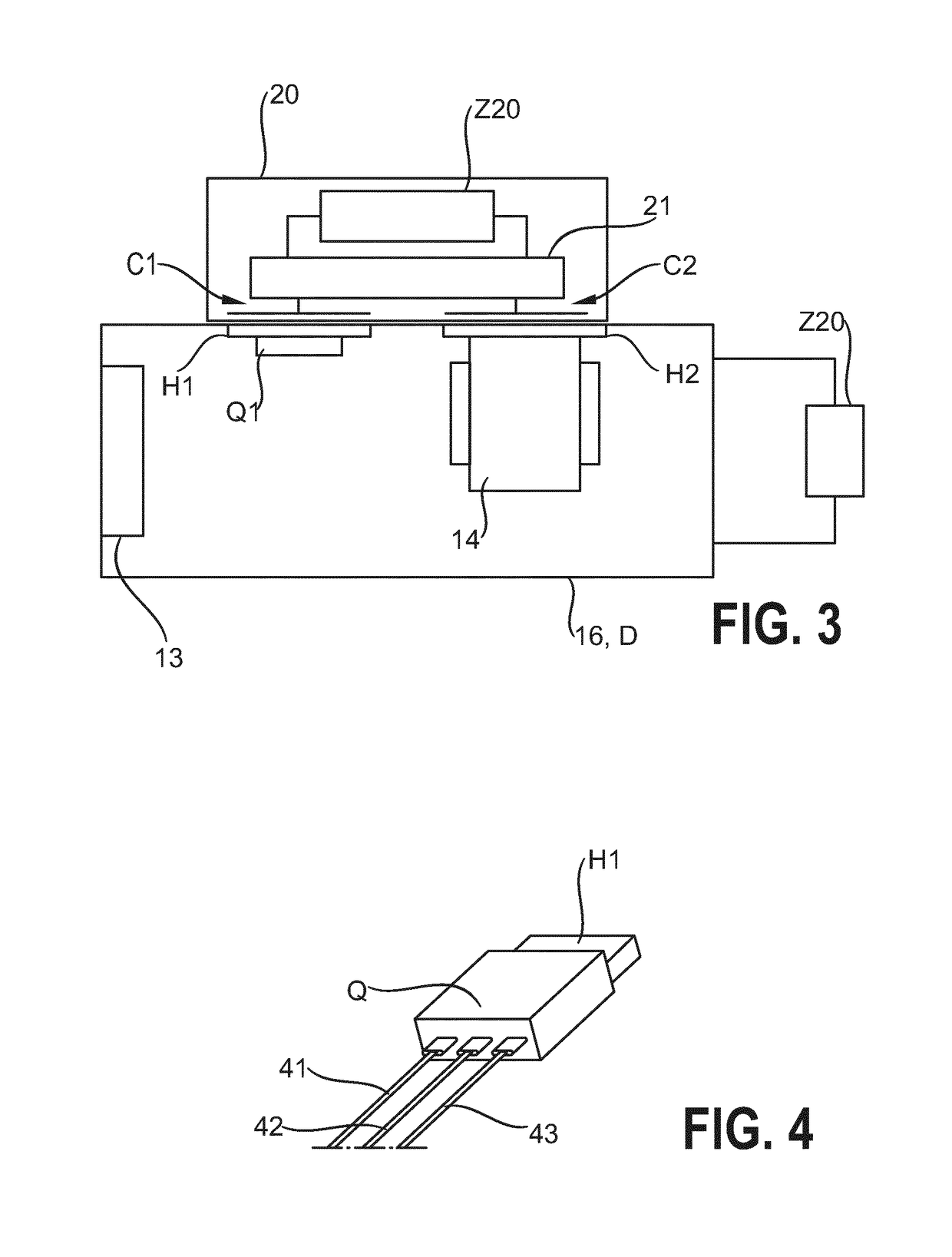Capacitive power transfer arrangement
a power transfer arrangement and capacitor technology, applied in the direction of lighting and heating apparatus, process and machine control, instruments, etc., can solve the problems of reducing consumer acceptance of such wireless applications, reducing design costs and resulting product costs, and reducing so as to increase the surface area of the heatsink, maximise the capacitance of the coupled capacitor, and easy to identify
- Summary
- Abstract
- Description
- Claims
- Application Information
AI Technical Summary
Benefits of technology
Problems solved by technology
Method used
Image
Examples
Embodiment Construction
[0045]FIG. 1 shows a schematic circuit diagram of an embodiment of a capacitive power transfer arrangement 1 according to the invention, in a bipolar realisation with two coupled capacitors C1, C2 for transferring power from a first electrical device 10 to a second electrical device 20.
[0046]The first electrical device 10 is shown to have a driver 11 for driving a load Z10, in this case an LED light source L10. The driver 11 incorporates a diode bridge rectifier and a switched-mode power supply 12, in this case a flyback converter 12, to convert mains input to a DC output for the load Z10. The switched-mode power supply 12 uses a transistor switch Q, in this case a MOSFET 10, to perform rapid on / off switching of the DC output voltage in the usual manner when a pulse-width modulation control signal is applied to the control input of the transistor switch. In this exemplary embodiment, a first plate / electrode C110 of the first coupled capacitor C1 is electrically connected to node N a...
PUM
 Login to View More
Login to View More Abstract
Description
Claims
Application Information
 Login to View More
Login to View More - R&D
- Intellectual Property
- Life Sciences
- Materials
- Tech Scout
- Unparalleled Data Quality
- Higher Quality Content
- 60% Fewer Hallucinations
Browse by: Latest US Patents, China's latest patents, Technical Efficacy Thesaurus, Application Domain, Technology Topic, Popular Technical Reports.
© 2025 PatSnap. All rights reserved.Legal|Privacy policy|Modern Slavery Act Transparency Statement|Sitemap|About US| Contact US: help@patsnap.com



